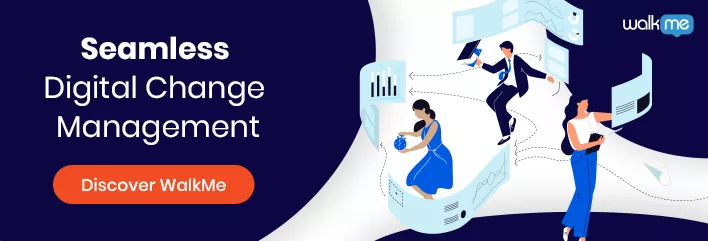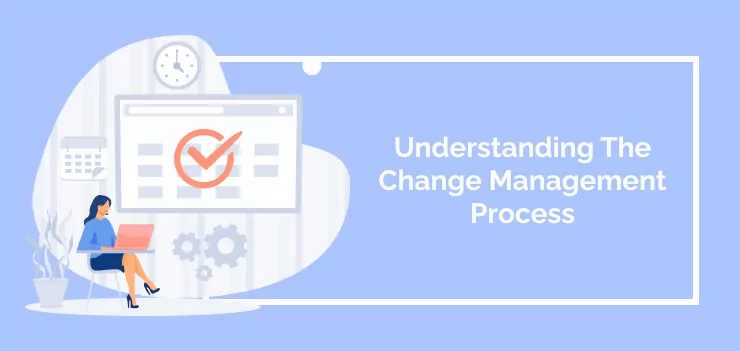
The high-octane nature of modern business ensures that change is a constant factor.
Change management has become an essential aspect of every organization, whether due to adopting new technology, a shift in leadership, or restructuring in the new normal.
To effectively navigate these changes and ensure successful adaptation, change practitioners must adopt a structured change management process. This process involves preparing individuals and teams, guiding them through the transition, and supporting organizational development as they move from their current state to a desired future state.
Our research shows that 47% of organizations that integrate change management are more likely to meet their objectives than the other 30% that did not incorporate it. However, when observing the success of change at large, only 34% of change initiatives succeed.

Carefully deploying the appropriate strategic planning and management parameters becomes especially important when enacting organizational change on a large scale. Without a proper change management process, organizations may face resistance, disengagement, and disorder on every level — ultimately harming their bottom line.
This article will explore the change management process. We’ll first investigate the different types of change management before discussing the business scenarios that necessitate their implementation — providing valuable insights for organizations seeking to optimize their approach to managing change.
What is change management?
Change management is a systematic approach to facilitate the transition or evolution of an organization’s objectives, processes, and technologies.
This process encompasses deploying strategic measures and resources that empower individuals, teams, and the entire organization to adapt seamlessly to new circumstances, embrace change, and accelerate business performance.
The primary objective of change management is to minimize resistance to change, maximize engagement, and ensure that the organization can successfully navigate through periods of uncertainty and digital disruption.
What is the change management process?
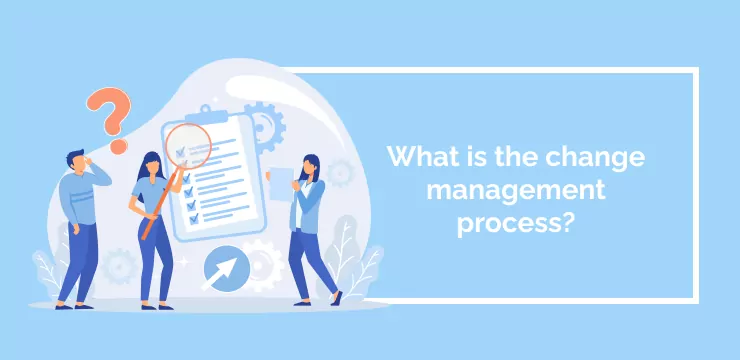
The change management process makes up the tangible touch-points within a wider change management strategy, providing a structured approach to support organizational transitions from beginning to end.
This all-encompassing framework simplifies each phase of the change journey, promoting a fluid and effective shift from one state to the next. The change management process typically includes a detailed review and analysis of the current state, outlining the desired future state. It is then followed by planning for how to reach the desired future state and then implementing necessary changes.
According to Gartner, over 80% of organizations implement change from the top down. However, when top-down changes fail, leaders frequently attribute it to the workforce. Nevertheless, 64% of employees already possess the necessary skills for successful change, and 74% express willingness to support the change.
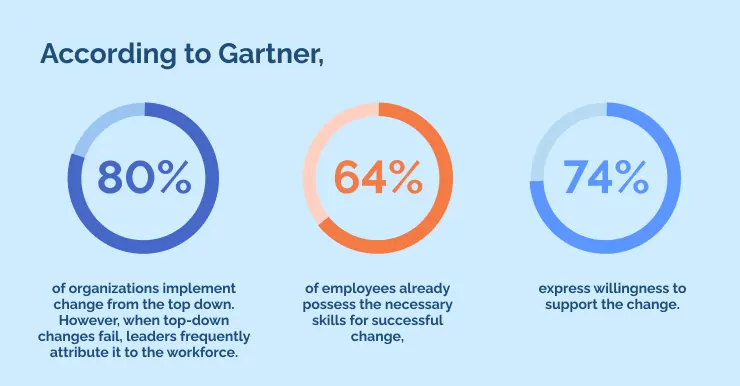
The Change Management process

The change management process involves creating awareness and urgency, developing a desire for change, enabling change, driving and sustaining action, and reinforcement and evaluation.
Every company changing must ensure to follow the following key steps. Let’s explore these further:
1. Creating Awareness and Urgency
Creating awareness and urgency is the first step in the change management process.
It involves educating stakeholders on why change is necessary and the potential consequences of not implementing it. To effectively create awareness and urgency, change managers must communicate the benefits of the change and provide data to support the need for change.
They must also highlight the risks and costs of maintaining the status quo. This step requires clear and concise communication and active engagement with stakeholders to understand the reasons behind the change and the potential impact on their roles and responsibilities.
A strategic communication plan should be developed to ensure that all stakeholders understand the desired outcomes of the change and any potential risks or benefits associated with it.
Using a strategic communication plan, managers must do a few things:
- Create awareness of the problem
- Develop a sense of urgency around that problem
- Show the negative consequences of ignoring the problem
This is the first step towards inspiring employees and igniting a desire for change. If this step is skipped, then employees will be less motivated to change – they won’t understand what they are doing or why they are doing it.
That lack of motivation can manifest as resistance, slowing down, or damaging a change effort.
2. Developing Desire for Change
Creating a sense of urgency is only the first step in driving change. After all, what good is urgency without action? To develop a true desire for change, you must focus on solutions that will make a real difference. This means presenting employees with clear benefits and outcomes they can relate to and embrace.
One way to achieve this is by tapping into the self-interest of your team. People are naturally more motivated when they feel that something benefits them personally. By personalizing the problem you’re trying to solve and highlighting how your solution can improve their lives, you can help employees see the value in driving change.
However, it’s important to note that there’s a fine line between influencing and mandating change. Dictating change may seem like a quick and easy solution, but it often creates resistance and feelings of alienation among employees. Instead, you should create a desire for change so that employees willingly carry out the work for you.
To get started, try using these strategies:
- Showcase the benefits: Outline the benefits of the proposed change, such as increased efficiency or improved working conditions. Make sure to highlight how these benefits will positively impact employees.
- Encourage participation: Involve employees in the process by soliciting feedback and ideas. This empowers employees and helps them see the value of driving change.
- Provide support: Offer training and other resources to help employees adapt to the changes. This can reduce frustration and friction while helping to ensure the success of the initiative.
By focusing on solutions, tapping into self-interest, and avoiding dictatorial approaches, you can help create a desire for change that drives real results.
3. Enabling Change
People need the right tools to successfully implement change. Without the knowledge or ability to change, they won’t be able to move forward. Therefore, the third step in the change management process is to provide employees with the resources, training, guidance, and support they need to succeed.
This can include providing employees with access to new technology, training them on how to use the tools, and giving them a chance to practice the tools and techniques. It can also mean providing feedback on their performance, mentoring them through the process, and ensuring they have access to the right resources.
For example, if you are adopting new software, you will need to:
- Install and deploy the software
- Onboard new employees
- Offer employee training and guidance
To ensure successful implementation, it is important to reverse engineer your solution. This means identifying the tools and knowledge your employees require and providing them with everything necessary to carry out the task effectively.
It’s not enough to simply tell a worker to hammer in a nail; you must give them the hammer first. By understanding the resources your employees need, you can proactively equip them with the right tools and information to achieve the desired outcome.
This approach will result in more efficient operations and increased productivity, as your employees will have the confidence and capability to complete their tasks effectively.
4. Driving and Sustaining Action
Creating a sense of desire in employees is crucial to motivating them to achieve the desired outcomes of a change initiative. However, to achieve continued progress, it is necessary for change managers to proactively involve employees in the change process.
This can be achieved by providing employees with the necessary tools and resources to execute their objectives successfully and creating an environment that fosters collaboration and innovation.
For change initiatives with longer life cycles, employees need to experience the program to fully understand its value. Hence, communication should be focused on presenting a clear vision and change story that highlights the benefits of the change.
In addition, offering rewards for short-term wins can be an effective way to motivate employees further. These rewards need not be elaborate, but recognition is a powerful way to acknowledge change and encourage employees to continue making progress.
Change managers must remain persistent and patient throughout the change process, inspiring and driving progress even during challenging periods. This requires continuous engagement with employees, proactive problem-solving, and the ability to adapt to changing scenarios.
5. Reinforcement and Evaluation
While change initiatives may get off to a good start, it’s important to remember that change is not complete until it has become permanent. Ongoing reinforcement ensures the program becomes part of the company’s culture.
Change efforts will likely fail if not reinforced after initiation. Inertia, habits, and residual resistance can cause some programs to lose traction, leading employees to revert to their old ways.
To prevent this from happening, it’s crucial to continue reinforcing the change program after its official completion. This can be achieved through various means, such as:
- Demonstrating the benefits of the change program: Regularly reminding employees of the positive impact the program has had on the organization can help reinforce the importance of the change.
- Measuring progress, evaluating feedback, and adjusting the program as necessary: Monitoring key performance indicators (KPIs) and gathering employee feedback can provide insight into what works well and needs improvement. Adjustments to the program can then be made accordingly.
- Reviewing the program thoroughly after completion: Analyzing data, incorporating employee input, and considering the perspective of relevant stakeholders can provide valuable insights into what worked well and what could be improved in future programs.
In addition to these methods, it’s also important to have a clear plan for sustaining the change program. This plan should include specific goals, timelines, and milestones to help keep the program on track.
Regularly communicating progress updates to employees and stakeholders can help build momentum and reinforce the program’s importance.
Change Management Process: What Next?
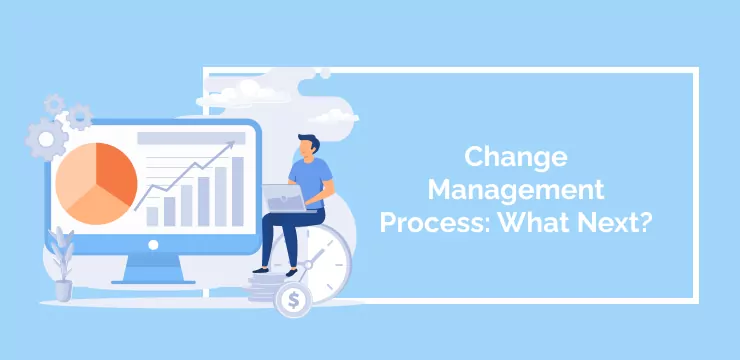
By now, you’ve probably realized that successful change management doesn’t end with implementation. It requires ongoing monitoring and evaluation to ensure that the change sticks and that the organization continues to reap its benefits over time.
A robust change management process is the backbone of a future-ready organization. It enables businesses to harness the power of change, turning challenges into opportunities and cultivating cultural capabilities.
Through diligent progress tracking, comprehensive evaluation of the change management process, and consistent maintenance of open communication, your organization can effectively equip itself to handle change both now and in the future.
WalkMe Team
WalkMe spearheaded the Digital Adoption Platform (DAP) for associations to use the maximum capacity of their advanced resources. Utilizing man-made consciousness, AI, and context-oriented direction, WalkMe adds a powerful UI layer to raise the computerized proficiency, everything being equal.



